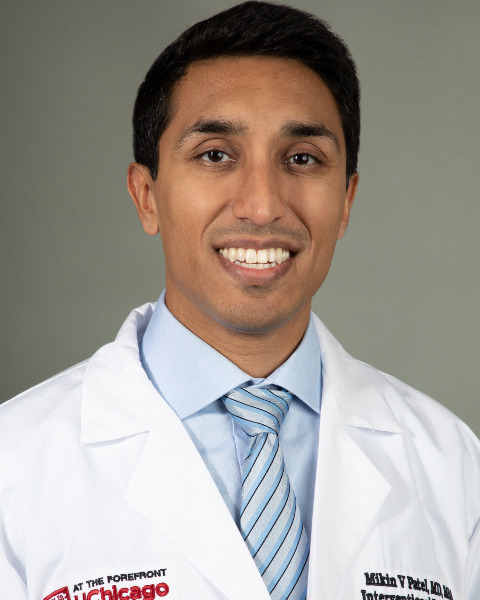SIR 2025
Pain Management/MSK
Scientific Session
Featured Abstract
Single Center One- and Two-Year Outcomes of Genicular Artery Embolization for Symptomatic Knee Osteoarthritis

Wali Badar, MD
Resident physician
University of Illinois at Chicago, United States.jpg)
Ajay Varadhan, BS
Northwestern Interventional Radiology Research Fellow and Medical Student
Northwestern University Feinberg School of Medicine, Chicago, IL, United States
Ali Husnain, MD (he/him/his)
Postdoctoral Research Fellow
Northwestern University, United States
Abin Sajan, MD
Resident
Columbia Irving Medical Center, United States
Qian Yu, MD (he/him/his)
Resident
University of Chicago, United States- MA
Magdalena Anitescu, MD, PhD
Professor of Anesthesia and Critical Care
University of Chicago Medical Center, United States - BR
Brendon Ross, DO, MS
Assistant Professor of Orthopedic Surgery and Rehabilitation Medicine
University of Chicago Medical Center, United States - SW
Sara Wallace, MD
Assistant Professor of Orthopedic Surgery
University of Chicago Medical Center, United States - RU
Rosemary Uy-Palmer, NP
IR Nurse Practioner
University of Chicago Medical Center, United States 
Mikin V. Patel, MD
Assistant Professor of Radiology
Department of Radiology, University of Chicago, United States
Osman Ahmed, MD, FSIR
Associate Professor of Radiology
University of Chicago, United States
Presenting Author(s)
Author/Co-author(s)
Materials and Methods: A single center, IRB approved retrospective study including 27 consecutive patients (age: 62.3±11.9, BMI: 34.1±8.5, 23 female, 4 male) received GAE for symptomatic KOA from 9/2021 to 9/2023 (table 1). GAE was performed using 200-micron HydroPearl microspheres (Terumo; Tokyo, Japan). Treatment population was predominantly African-American (n=16, 59%). Clinical outcomes were assessed with the Western Ontario and McMaster Universities Osteoarthritis Index (WOMAC) Pain scoring system (0-20) at pre-GAE visit as well as 12- and 24-months post GAE visits. A 20% reduction in the WOMAC Pain score at one- and two-year follow-up, was considered clinically significant based on the minimal clinically important difference (MCID) without any increase in baseline medication or intra-articular steroid use {1}. Student t-tests were used to evaluate reduction in WOMAC Pain scores. Subset analysis of MCID categorical response was performed for gender, race, age, BMI, number of vessels treated, volume of embolic used, and Kellgren Lawrence (KL) grading of KOA using Fisher and Kruskal Wallace tests.
Results:
A total of 30 knees were treated (R: n=15 and L: n=15) with KOA severity: KL-2: n=14 (47%) and KL-3: n=16 (53%). An average of 2.9±0.9 vessels were treated per GAE with 1.9±0.9 mL of embolic administered per GAE (1:3 dilution of microspheres to contrast medium). Follow up one-year WOMAC pain score showed a 19.9% reduction from baseline (n=30, p=0.001*) and two-year follow up WOMAC Pain score showed a 21.4% reduction from baseline (n=11, p=0.010*). MCID Categorical Response was 33% at one-year and 27% at two-years. Univariate analysis demonstrated that BMI was predictive of categorical response (p=0.012).
Conclusion: GAE shows modest long-term outcomes up to two years post treatment for symptomatic KOA. BMI may serve as a predictive tool for long-term GAE outcomes.


.jpg)